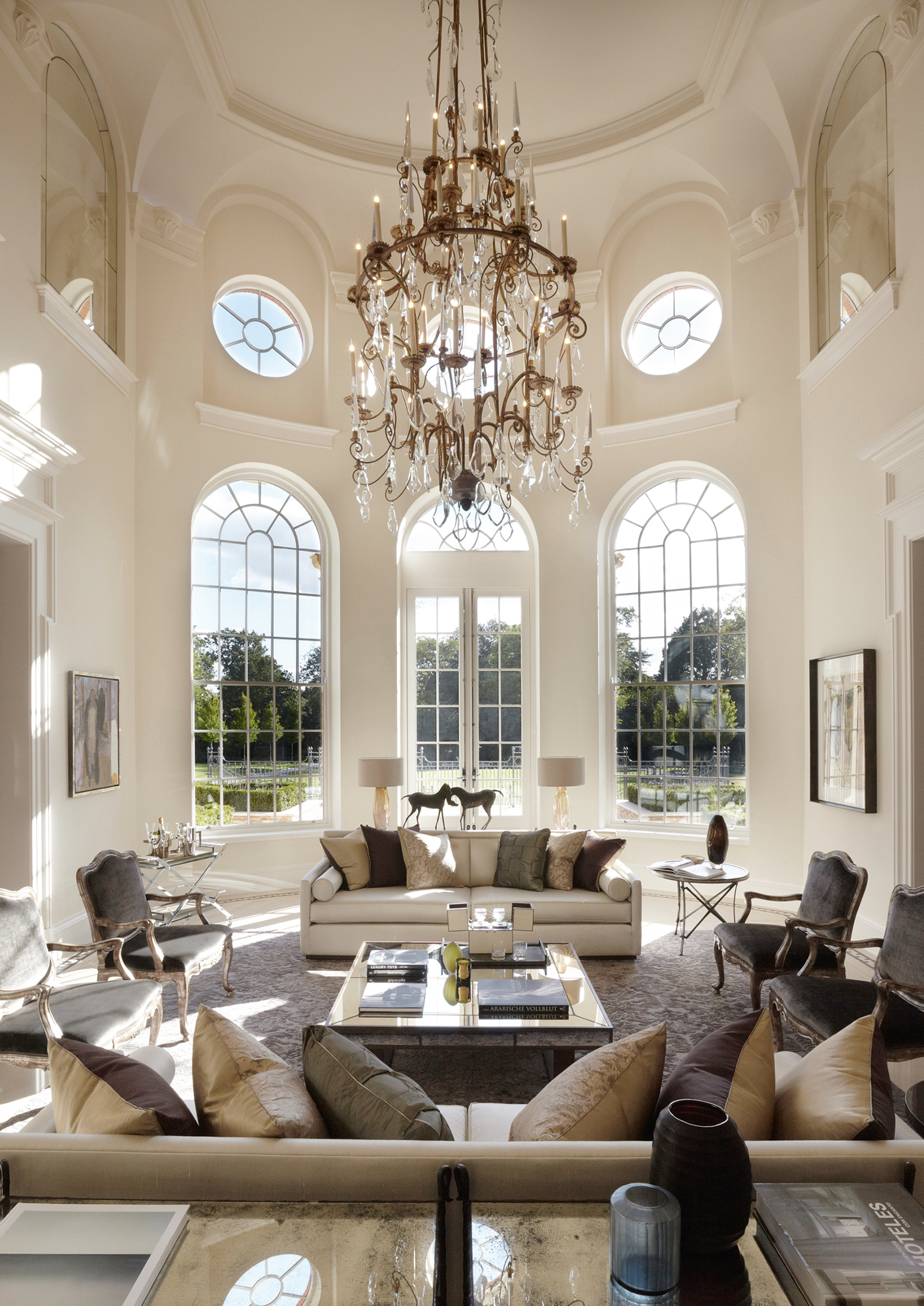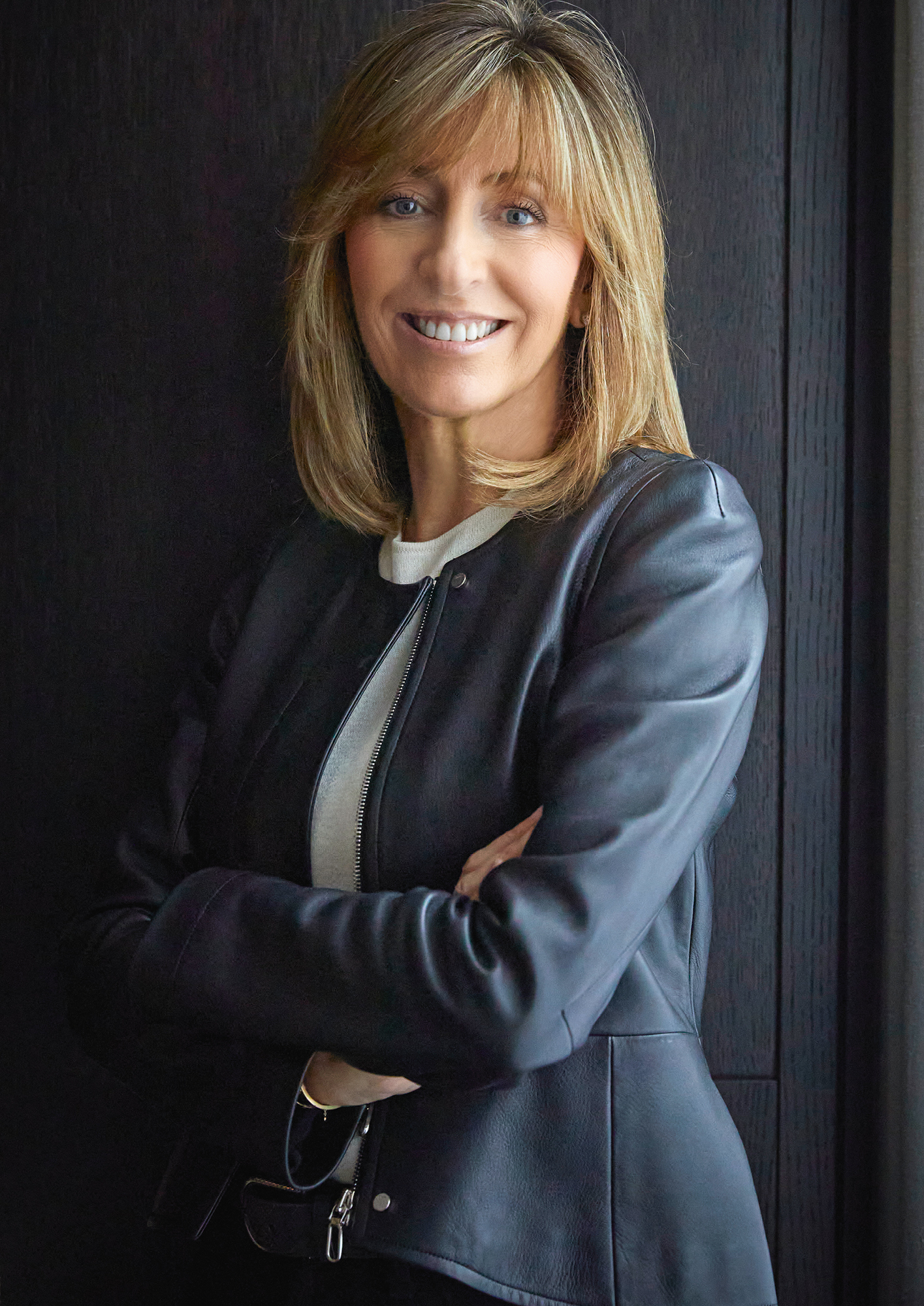WORDS
Imogen Almond
How did you get into luxury interior design?
I have always had a passion for design. I grew up inspired by my father’s creativity, he owned an interior boutique in Hamstead. I started my career in fashion; however, I soon realised my true passion was for interiors. I am a self-taught designer but always being surrounded by art and creativity provided me with a lot of inspiration.
I began my own journey and opened my first showroom on Walton Street in London in 1991, which specialised in antiques and accessories. My first break as a designer came from a regular client of my boutique – where I had the opportunity to design their apartment in Cadogan Square.
How would you describe your design style, and who or what are your biggest influences?
I was influenced by my father; his sense of style and curiosity have inspired me since I was a child. I usually describe my design style as timeless, it’s a combination of raw and refined pieces that seamlessly sit together to create a unique look. I do not believe in chasing trends. Instead, I design interiors that will withstand seasons and generations.
How do you incorporate wellness and nature into your designs?
Our design ethos is rooted in the belief that exceptional design has the power to transform our surroundings and improve our wellbeing. We design spaces and products that seek to promote and facilitate holistic approaches to wellbeing and comfort in the home. I love incorporating an open-plan concept that allows for harmony between rooms while still distinguishing spaces to relax and unwind.
I also like taking architectural features in the home, such as floor-to-ceiling windows, and inviting the outdoors in; taking inspiration from the natural surroundings of each property, whether this be views onto Regent’s Park or a cityscape in Europe or the Middle East, to develop colour palettes and furniture silhouettes.

You have more than 30 years of experience working in interior design. What have been some of the highlights?
The main highlight in my career has been seeing my studio develop over the past 34 years. During these years, we launched our first LB Furniture Collection in 2005 and took up premises within London’s Brompton Cross – our Design Studio and Showroom – in 2009, along with much more.
I am also proud of the release of my first book, Interior, in 2021, which gives insights into the creative thinking behind some of the studio’s most notable projects. Finally, I am very proud of the longevity of the relationships we have built with our clients and suppliers over the past 30 years.
How would you describe your dream client?
Somebody who understands the work and dedication that goes into creating the client’s dream home. We work with amazing clients who trust in our process, each client is different and so it takes time together to understand their individual needs and brief. As a studio, we take the time to fully understand and appreciate their lives and lifestyles and apply this knowledge to the design process. We are able to guide and advise the client on the journey and this synergy is key to a successful relationship.
As a woman, have you faced any challenges and how have you overcome them?
I think in any industry there is always a challenge when it comes to women in business, but I feel the interior design space is a great industry for women to thrive. I have learned so much over my time running my business, and I continue to learn every day.
In terms of diversity and inclusion, do you think the design industry offers equal opportunities to all?
Like in any industry, interior design often faces its setbacks when it comes to diversity and inclusion. However, as a company, we offer equal opportunities to all. There are also incredible organisations such as United in Design, which is doing great work to ensure opportunities for all in the industry.

What advice would you give specifically to women in leadership roles?
I would tell women to trust their passion and expertise. So often, women in leadership roles tend to shy away from industry opportunities but my advice would be to not waver in your self-belief and be confident to be both seen and heard.
What are your predictions for the next major design trends?
The biggest trend we see in the interior design industry is the focus placed on sustainability – clients are more concerned with the “where” and “how” of their products and designs. Providing environmentally responsible products proves to be popular with clients. We will also see increased requests for wellness to be incorporated into the design brief. People want their homes to be sanctuaries of peace and calm, a place to relax and unwind. Increasingly, more of our clients want wellness rooms such as designated yoga spaces or coffee nooks so they have access to places that make them happy in the comfort of their own homes. With remote and hybrid working becoming more common, this also pushes the desire to have spaces like these.
What’s next for Louise Bradley?
We are very busy here at Louise Bradley, having just launched our new sustainable and philanthropic Fabric Collection, we are eager to expand our product range to offer consumers and other businesses access to our growing product range. We also have exciting residential projects in the pipeline, both in the UK and abroad.





